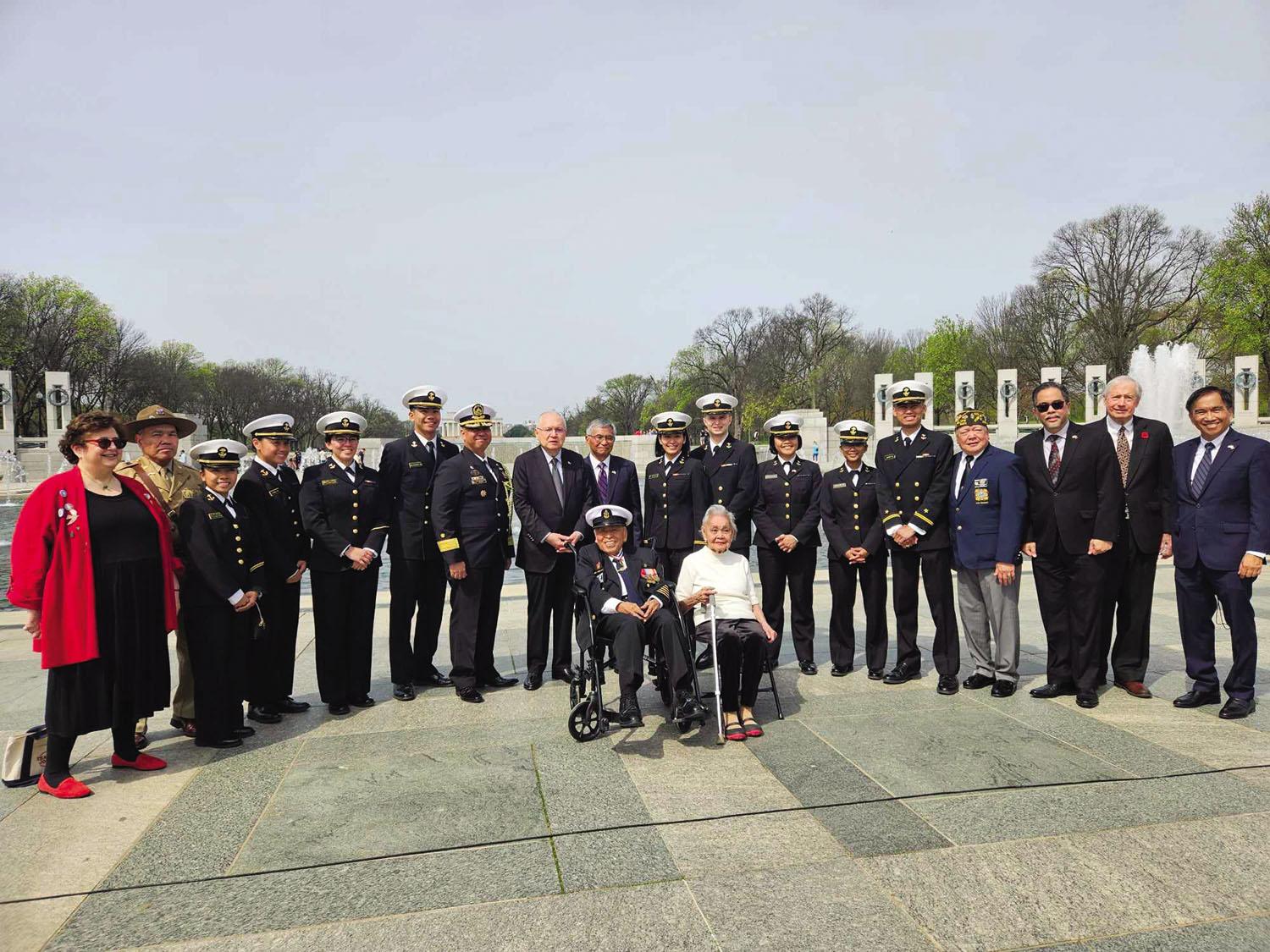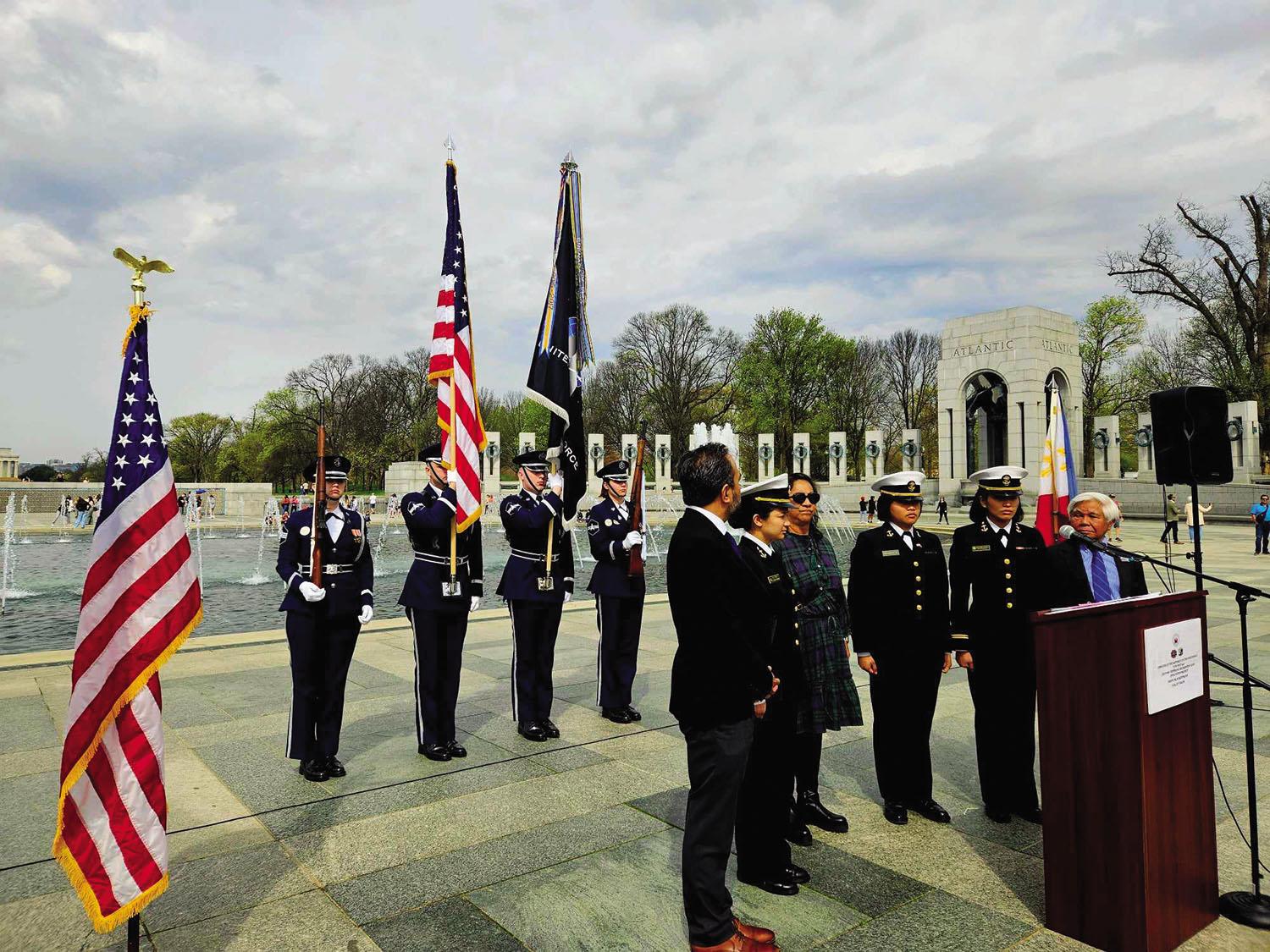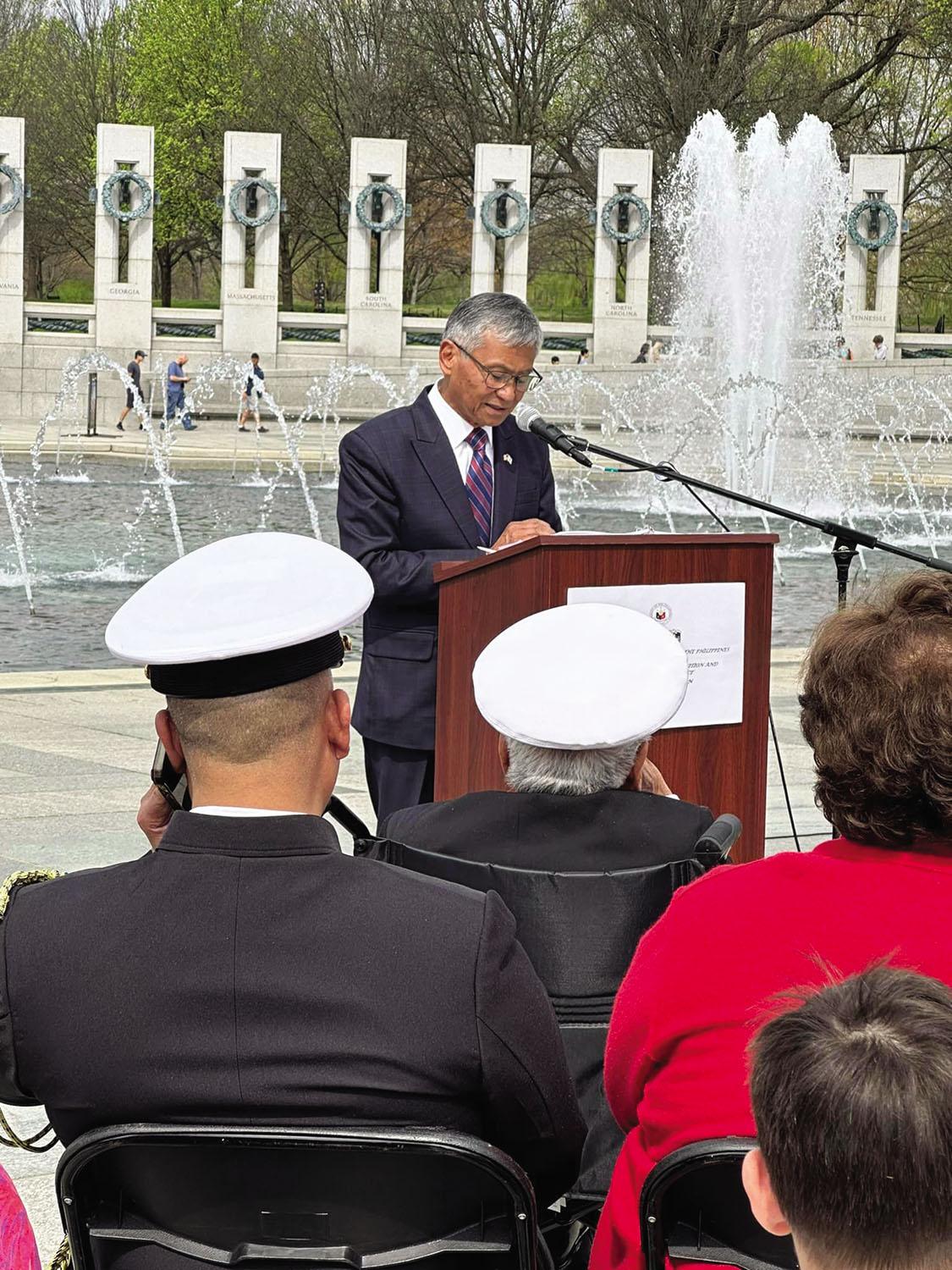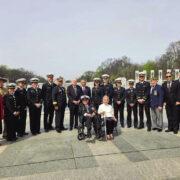
AS they do every year on April 9, families, friends and advocates of Filipino World War II veterans gather in the National World War II Memorial, a massive bronze and stone plaza by a reflecting pool dedicated to the women and men who fought in America’s war. Filipino soldiers were among those on the battle front in December 1941 through April 9, 1942, fighting under the American flag. But it was only seven years ago when the U.S. recognized their service and sacrifice.
“Araw ng Kagitingan” (Day of Valor) used to be called “Fall of Bataan,” to commemorate the thousands who fought in one of the last stands of American and Filipinos soldiers before they fell to Japanese forces. In the infamous Bataan Death March, more than 10,000 died during the 60-mile march to prison camps.
Led by the Filipino Veterans Recognition and Education Project (FilVetREP), this year’s commemoration was preceded the day before by a celestial event – a solar eclipse that brought together people all over the world. The following morning, blessed by warm weather and sunny skies, April 9ths “Day of Valor” was witnessed by hundreds of tourists from across the country, many of whom heard for the first time the heroic and patriotic service of Filipino and American soldiers and sailors in the Philippines during World War II.
Unbowed and undeterred
When the Memorial opened 20 years ago, there were more than two dozen Filipino veterans living in the DC area. Today, only two remain: 96-year-old Rey Cabacar and 96-year-old Rudy Panaglima. Along with their comrades, they had organized themselves as the American Coalition of Filipino Veterans (ACFV), under the leadership of Captain Pat Ganio. They felt humiliated that Congress had passed the Rescission Act in 1946, barely a year after the U.S. had declared victory. But this victory was not meant for the 260,000 Filipinos who served and died under the American flag. Unbowed and undeterred, these aging and ailing soldiers staged protest actions in front of the White House. They walked the halls of Congress to demand what was promised them.
In 2009, about 18,000 veterans received a one-time payment of $15,000 through the Filipino Veterans Equity Compensation (FVEC) Fund. Filipino veterans residing in the Philippines received $9,000. The late Sen. Daniel K. Inouye, who championed the cause of Filipino World War II veterans in Congress, made this benefit possible. In 2016, largely through Sen. Mazie Hirono’s effort, FilVetREP successfully secured legislation that awarded the Filipino Veterans of World War II Congressional Gold Medal. It was signed into law by President Barack Obama in December that year.
Congressional gold medal

Following the “Day of Valor” event was a Congressional Gold Medal ceremony held at the Philippine Embassy. Honored were World War II veterans who had passed away: Sergeant Alfonso O. Torre, Captain Dominador Gregorio, Second Lieutenant Tiburcio Manguiran and Victor Villadolid. Accepting the medals on their behalf are grandsons and granddaughters, including a widow, Fe Rael Villadolid.
“This award ceremony is a once in a lifetime event for many here today, especially the families of our veterans,” Taguba said. “This is the 109th award ceremony we have conducted.”
Brown faces in white sands

Last month, FilVetREP leaders and supporters joined more than 5,000 participants in the annual Bataan Memorial Death March (BMDM) in White Sands, New Mexico. The march along rugged terrain of ankle-deep sand, gravel and rolling hills is known as the most grueling in the U.S.
FilVetREP’s presence in the last eight years has raised greater awareness about the plight of Filipino soldiers who were deprived of their rightful benefits by the 1946 Rescission Acts. Although the memorial march has been going on for 35 years, it’s only been known recently that Bataan is in the Philippines.
Today, the Philippine flag is prominently displayed and the Philippine National Anthem is sung at BMDM’s ceremonies. Many marchers proudly display Philippine insignias on their back packs. On their shirts are printed names and pictures of loved ones who marched in Bataan.
Active history lessons

As annual events, the Bataan Memorial Death March and the April 9 Day of Valor are active history lessons. “They remind us of a proud legacy of service and sacrifice,” said Taguba. “They inspire us to continue telling their stories and keep them alive for posterity. For their staunch defense of freedom and democracy, we must make sure they did not die in vain.”
To preserve their legacy, FilVetREP embarked on developing an education program in 2017, titled “Duty to Country.” It is currently used in seven states – California, Georgia, Hawaii, Maryland, New Jersey, Virginia and Washington State. The curriculum is being taught by 22 teachers in elementary, middle schools, high schools and colleges. As a result, more than 2,400 students are learning the history of US-Philippine relationship dating back to 1898.
An award winning education program, www.dutytocountry.org was approved and fully funded by the U.S. Department of Education. It is dedicated to those who gave their lives and sacrifice, to include their families, past and present, on the incalculable price to serve under one flag – the United States of America. n







